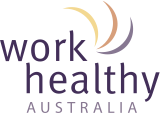
Employers must consider the needs of all workers when designing safe systems of work.
Manual handling industries – including manufacturing, logistics, healthcare and mining – play a crucial role in Australia’s economy, and provide jobs for a large portion of our population. Of the 14 million people currently in employment in Australia, around 44 per cent are undertaking work that requires manual handling.
Workers in these industries often face significant risks, including physical injuries and mental health challenges. Furthermore, workers in the first month on the job are over four times more likely to have a lost-time claim than workers with over one year in their current job. Supporting these workers isn’t just about ticking safety boxes – it’s about building a healthy, resilient workforce and ensuring long-term retention.
Persistence of MSK and psychosocial hazards
New workers in manual handling roles are at a higher risk of injury than their more experienced colleagues. The Centre for Work Health and Safety’s Autumn 2024 Edition of their Australian WHS Survey measured persistent exposure to musculoskeletal (MSK) hazards in workplaces, particularly in the manufacturing, healthcare and social assistance sectors. The survey also measured increased exposure to bullying and harassment over the past year, with notable increases amongst young workers.
For employers, these injuries can lead to:
- Difficulty retaining staff
- High turnover rates
- Increased costs due to workers’ compensation claims
- Reduced productivity and overall morale
Considering vulnerable workers
Employers must consider the needs of all workers when designing safe systems of work. Vulnerable workers are at a higher risk of physical and psychosocial hazards.
Your vulnerable workers may be:
- Young workers or those with limited workplace experience
- Workers with low literacy or English proficiency
- Workers from a culturally and linguistically diverse background (CALD)
- New workers at their job (regardless of age)

5 things you can do to support new workers in their initial months of employment
1. Implement early intervention
Identifying potential issues early, whether physical or mental, can prevent injuries arising. Early intervention programs can significantly reduce the impact and duration of injury and illness. Additionally, early intervention can reduce injury-related absenteeism and improve the work culture.
Get your wider team involved. Invite your supervisors to WHS information sessions, conduct floor walks, and educate the whole workforce on proactive injury management, for both physical and mental health concerns.
2. Provide training
Induction programs are critical for new workers to familiarise themselves with the job, the workplace and their team members. Comprehensive training and induction for new workers should include education about how to stay safe and the importance of noticing early warning signs:
- Inform new employees of the common hazards impacting their roles and industry
- Demonstrate and encourage stretching and warm-up exercises
- Inform them of the early warning signs for physical and mental injuries
- Encourage workers to feel comfortable putting their hand up when they feel a niggle or notice a hazard. This is particularly important for new workers, young workers, and CALD and migrant workers, who could fear raising an issue with a supervisor.
3. Offer new worker support programs
One effective way to support new workers is through work hardening – a structured program that builds both physical and mental resilience over time. Work hardening programs usually run for about six sessions, and aim to improve an employee’s ability to safely handle manual tasks while boosting overall wellbeing. New workers go through:
- Work-specific physical conditioning, tailored to specific tasks the worker will face.
- General health advice (sleep, nutrition, physical health, stress management).
- Regular check-ins with onsite health providers, who offer personalised advice and adjust exercises as needed.

4. Check-in often
New workers need more guidance, especially during their first few months. Regular check-ins with supervisors help ensure they are carrying out tasks safely. Other forms of ongoing support include:
- Having a buddy or mentoring system. Pairing new workers with experienced colleagues helps them learn on the job in a supportive environment.
- Fostering community connections and offering pastoral care, particularly for migrant workers, who might be displaced from their families and feel isolated.
- Scheduling formal reviews to assess new workers’ progress. Use these reviews to adjust workloads, provide additional support if needed and ensure the worker is comfortable and safe in their role
5. Train managers and supervisors
Managers and supervisors play a critical role in work health and safety, employee engagement and the culture of an organisation.
- Educate supervisors and managers to create a safe space for employees to raise concerns or challenges they are facing.
- Invest in manager training so they can recognise psychosocial hazards and understand how to intervene early.
Supporting new workers in manual handling industries is vital to building a healthy, resilient workforce. By implementing work hardening programs, building the skills of managers and supervisors, and providing ongoing support, employers can reduce injury rates, improve retention, and create a positive work environment.
Sign up to our monthly enewsletter
"*" indicates required fields
